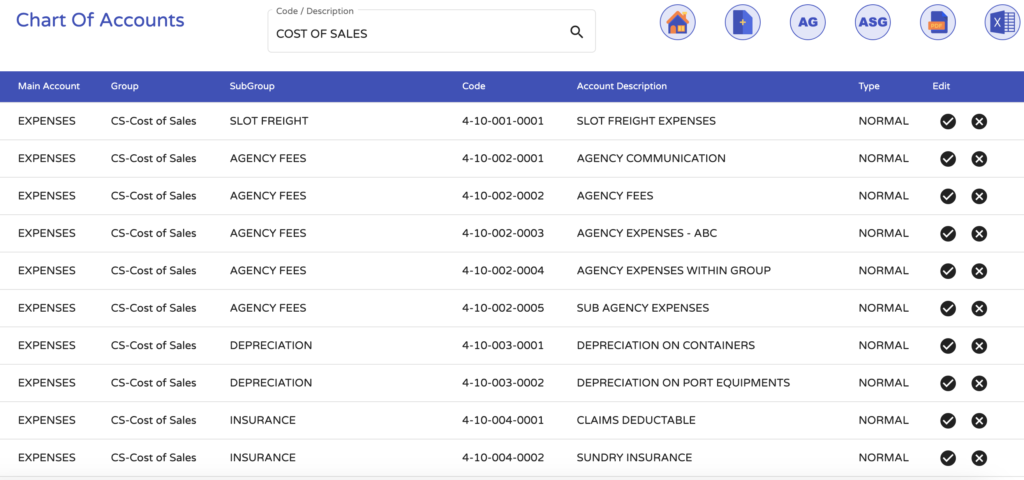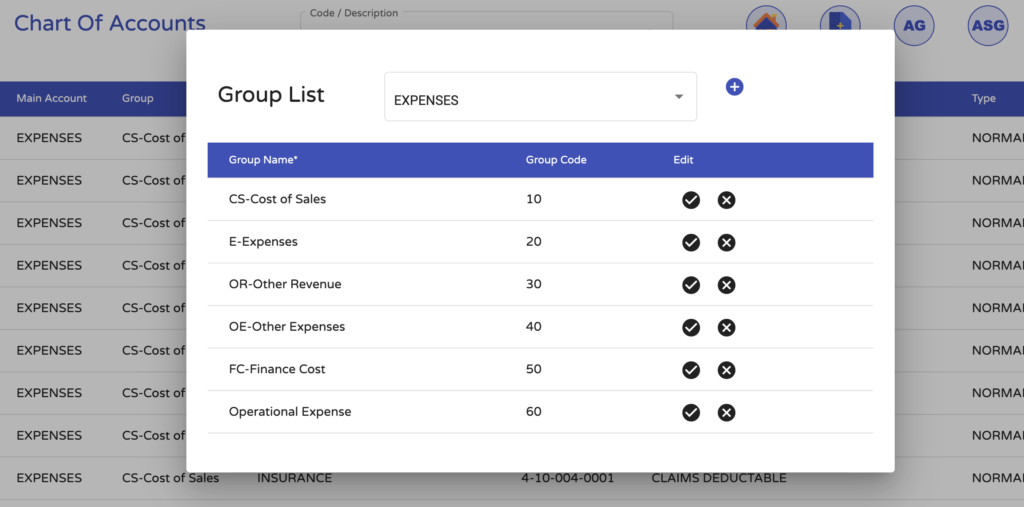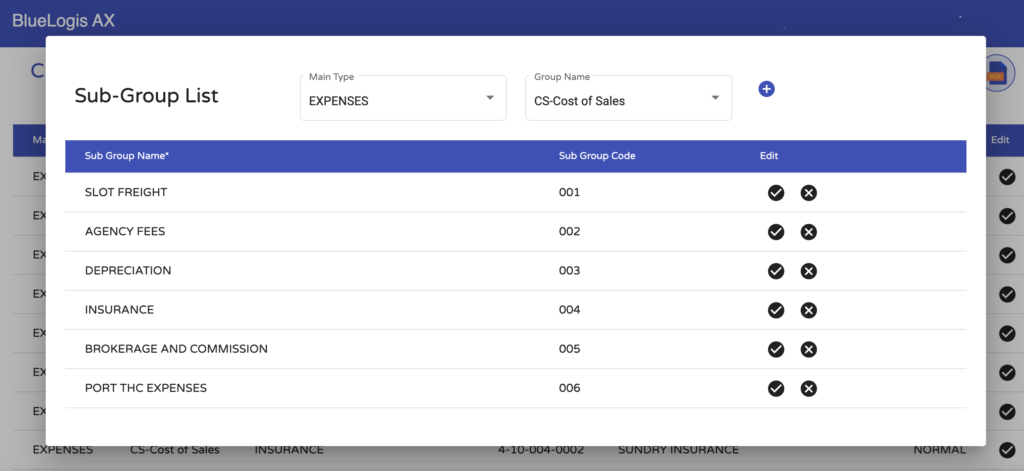A Chart of Accounts (COA) is a structured list of all the accounts used by an organization to record its financial transactions. It provides a systematic way to categorize and organize financial information for reporting and analysis purposes. A customizable Chart of Accounts is one that can be tailored to suit the specific needs and structure of an individual organization. As part of the Customizable Chart of Entries, We have automated GL code generation based on the Group code and Sub-Group code.
COA for Freight Forwarding / Agency / NVOCC:
Before creating a customizable COA, you will be asked to review our standard COA for any gaps compared to your current accounting practices. Consider factors such as the nature of your business, the industry you operate in, the types of transactions you deal with, and the level of detail you require in your financial reporting. Freight Forwarding businesses may required to see the finance books as Job-based Income and Expenses accounts, and Agency businesses would like to maintain finance books as Voyage-based or Job-based along with separate books of principal-specific transactions.
Customization:
This is where the customization comes in. Based on your organization’s specific needs, you can add, modify, or remove accounts and subcategories. For example, if your business deals with Sea, Air, Road, and Multimodal freight lines, you might create subcategories under Income such as “SeaExport Income”, “SeaImport Income”, and “AirExport Income” for each freight line’s sales.
Consult with Financial Professionals:
We always consult with your accountant or financial advisor during the implementation or customization of your COA. They can provide insights and guidance based on their experience and knowledge of accounting best practices to make the standard COA best suited for your Forwarding or Agency or NVOCC business.

Source: BlueLogis FX/AX/NX – Setup of Chart of Entries
Main Accounts :
We have already set up main accounts that are common to most forwarders, agents and NOVCCs. These usually include:
- Assets (e.g., Cash, Accounts Receivable, Inventory)
- Liabilities (e.g., Accounts Payable, Loans Payable)
- Income (e.g., Sales Revenue, Service Income)
- Expenses (e.g., Rent Expenses, Salaries Expenses)
Group and Sub-Group:
Within each of the main accounts, create groups and sub-groups to add more granularity. For example, under Expenses, you could have subcategories like “Cost of Sales” “Other Expenses,” and “Finance Cost”.

Source: BlueLogis FX/AX/NX – Creation of Group
Within each of the Group accounts, create relevant Sub-Groups to ultrafine the entries. For example, under Cost of Sales, you could have subcategories like “Slot Freight” “Agency Fees” and “Port THC Expenses”.

Source: BlueLogis FX/AX/NX – Creation of Sub-Group
Account Code or GL Code:
A unique GL code will be allotted by the software automatically to each account. These codes help in quickly identifying and categorizing accounts. A common practice is to use a numbering system where the digits of the code reflect the account’s position in the hierarchy. For instance, an account code of “4-10-001-0001” might represent “Slot Freight Expenses” under the Expenses main account (4) and CS-Cost of Sales(10) group and Slot Freight(001) sub-group account.
Consider Future Growth:
While customizing the COA, think about the future growth of your forwarding or agency or NVOCC business. Will the COA still make sense as your business expands? Try to strike a balance between being detailed enough to meet your current needs and flexible enough to accommodate future changes.
Remember that while customization is essential, maintaining consistency and adhering to generally accepted accounting principles is equally important. This will ensure that your financial records are accurate, understandable, and useful for decision-making and reporting purposes.
The time is now to automate finance for shipping companies !!!